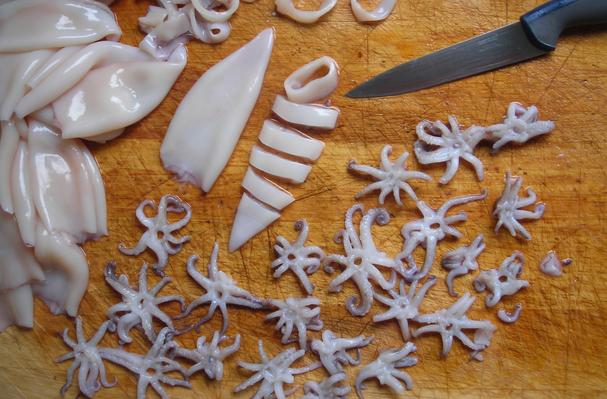Squid
About
Squids are 10 armed cephalopods that live in the sea. It is a relative of the octopus and the cuttlefish, and is a popular food in many parts of the world.
Squid meat is a little sweet and chewy if cooked properly. If overcooked, it will be a little rubbery.
Information
Physical Description
The main body mass is enclosed in the mantle, which has a swimming fin along each side. These fins, unlike in other marine organisms, are not the main source of locomotion in most species.
The skin is covered in chromatophores, which enable the squid to change color to suit its surroundings, making it effectively invisible. The underside is also almost always lighter than the topside, to provide camouflage from both prey and predator.
Tasting Notes
Selecting and Buying
Preparation and Use
Squid should be thoroughly cleaned, and often squid is cut into edible pieces due to its chewy nature.
Under running water, pull the skin off the little hat and run water inside it to get out anything else that might still be stuck in there.
While you are cleaning, you might feel a stiff, plastic-like cartilage quill. The end will be sticking out at the open edge of the hat where there is a little point. Just tug on it gently and pull it out. Set the little hat aside, it is clean!
Next, separate the tentacles from the eyes - keep the tentacles and throw the rest away. Grab the tentacles and feel in the middle for the little beak. You can just pop it by squeezing the sides gently, or by pushing it from behind. Be careful not to get squirted with the black ink.
Then, just slice the little hat into strips. If you have never cleaned calamari before, I recommend you watch this video online (http://www.youtube.com/watch?v=r06P7L782JQ) before cleaning- do not worry, it will not take you 5 minutes per animal! It takes me about 10 minutes to clean 1 1/2 pounds of calamari!
Conserving and Storing
Squid keeps very well when frozen.










